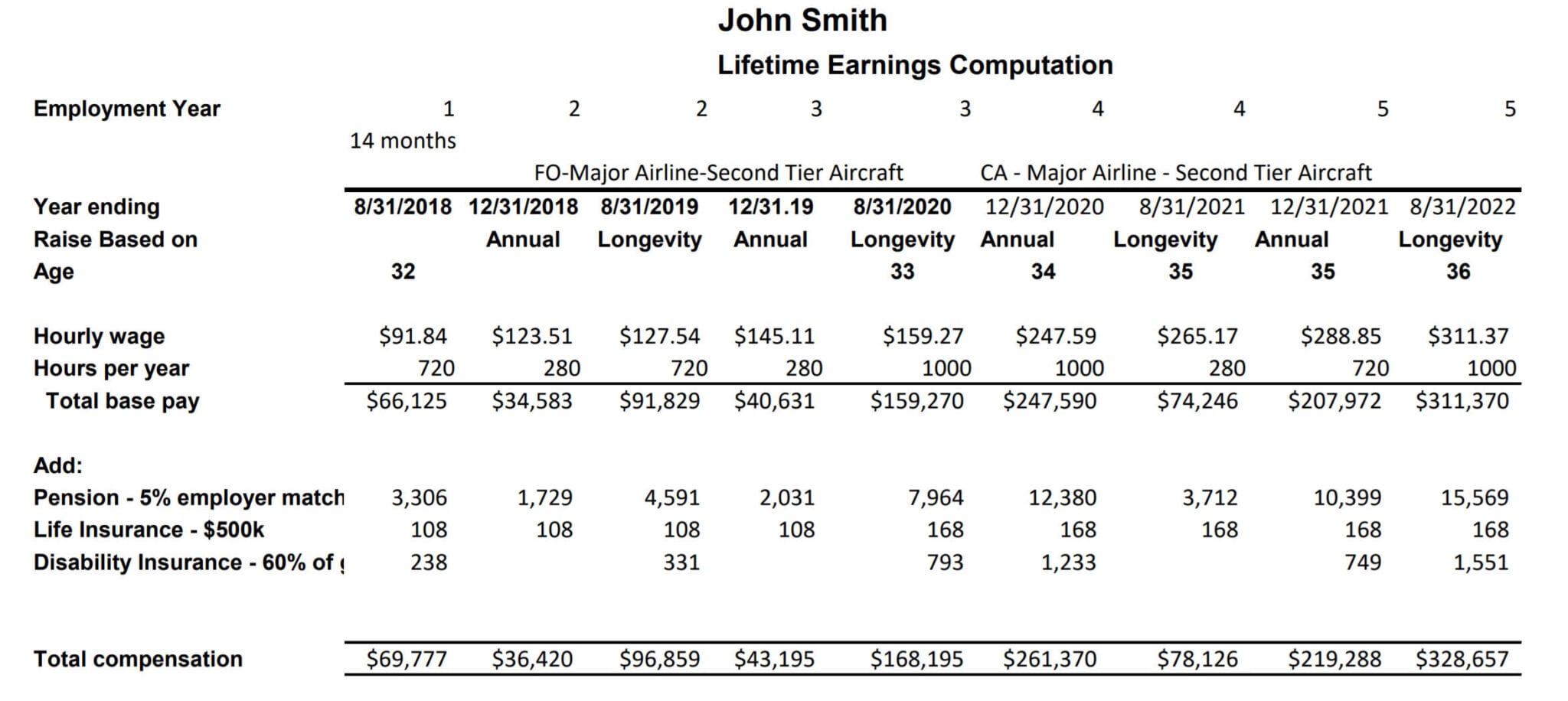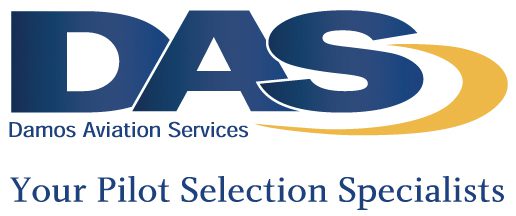Commercial Pilot
Lifetime Earnings Model
Expert Witness
Damos Aviation Services, Inc. has developed a commercial pilot life-time earnings model. This model may be used for pilots who have not yet been hired by a Part 121 air carrier or for Part 121 and Part 135 pilots who have lost their license and can no longer fly as a commercial airline pilot. For pilots who have not yet been employed by an air carrier, the model can accommodate three career paths:
- regional airline employment throughout the pilot’s career
- initial employment as a regional airline pilot followed by employment at a major carrier
- major air carrier employment throughout the pilot’s career. For pilots who are currently employed by a regional or Part 135 air carrier, the model includes changes to a major airline.

For all career paths, the model includes upgrades from first officer to captain and changes from smaller to larger aircraft. The commercial pilot life-time earnings model takes benefits into account as well as hourly pay rates.
Here are examples of the types of cases involving pilot career issues in which Dr. Damos has served as an expert witness:
- A Part 135 pilot who had recently interviewed unsuccessfully for a position at at regional air carrier was killed in a crash. Dr. Damos was asked to determine the likelihood of the pilot’s being hired by another air carrier and the probable path and timeline of the pilot’s career.
- A military pilot who was applying to the airlines was killed in an automobile crash. Dr. Damos was asked to determine if the pilot was likely to have been hired by an airline.
- A regional airline pilot was seriously injured while attending a public event. The pilot sued the facility owner and the operator for lost potential income, claiming that his injuries delayed his being hired by a major carrier by several years. Dr. Damos was asked to identify when the pilot became eligible to be hired by a major carrier.
- A highly qualified military pilot became disabled before being hired by an air carrier. Damos Aviation Services determined his likely career path and projected his life-time earnings discounted to present value.
- A 19-year-old student pilot was killed during flight training. The student had previously expressed an interest in becoming an airline pilot. Dr. Damos was asked to determine the student’s probable career path and life-time earnings discounted to present value.
Who can benefit from the use of the commercial pilot life-time earnings model?
- Attorneys litigating cases involving the death or disability of young pilots who have not yet begun their career as a Part 121 or Part 135 pilot
- Attorneys litigating cases involving the death or loss of license of current Part 121 or Part 135 pilots
- Insurance companies involved in compensation for Part 121 or Part 135 pilots
